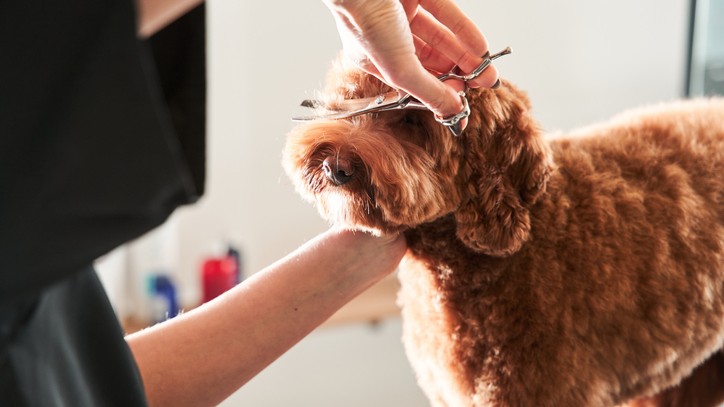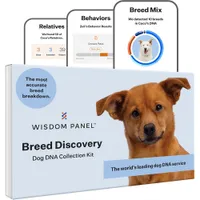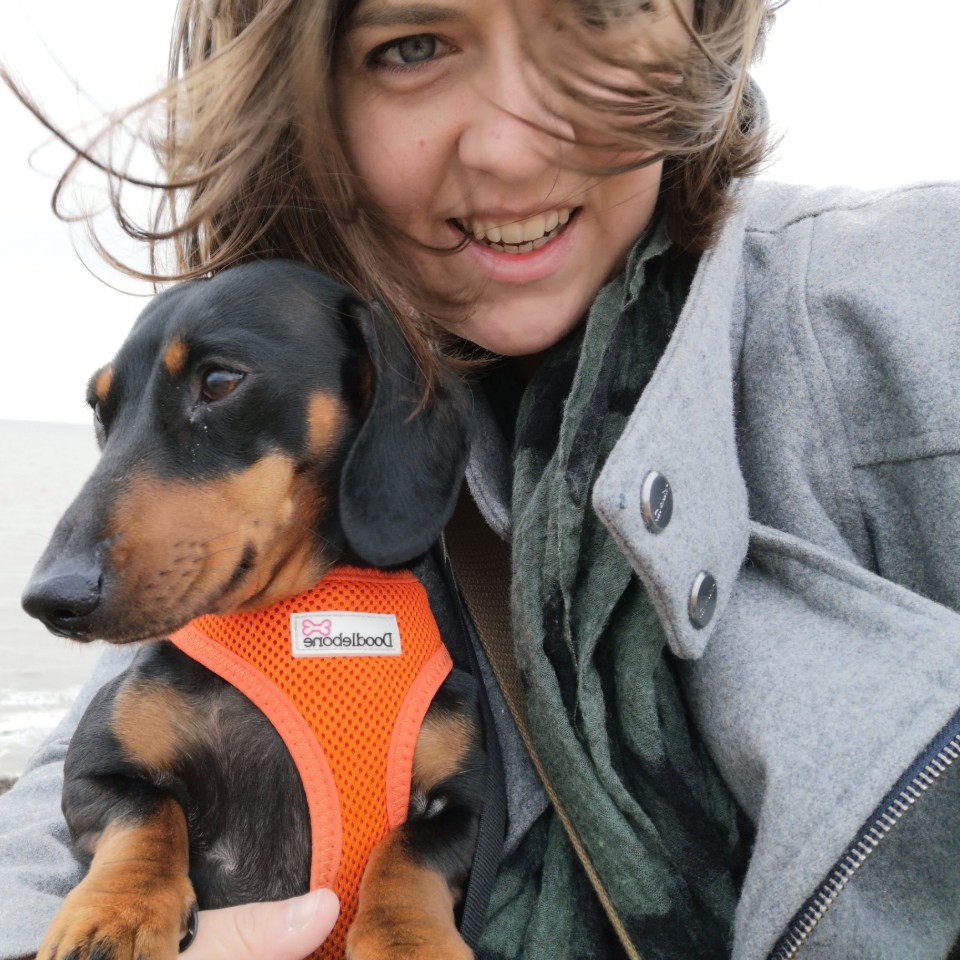Labradoodle: Breed profile
Intelligent, loving and with a low-shedding coat, a Labradoodle could make the ideal dog for you

Life expectancy: 12-14 years
Average weight: Male: 55-90lbs (24-40kg) Female: 55-90lbs (24-40kg)
About the same as: an eight-year-old child
A popular crossbreed, the Labradoodle is created by crossing a standard, miniature or toy poodle with a Labrador Retriever. It’s thought they were first created in the mid-1950s, but they have become particularly popular in recent years, along with other poodle mixes such as the cockapoo and cavapoo.
The Labradoodle has gained plenty of fans because of its low-shedding coat, making it appealing to those with allergies to dander or fur. They first started to gain popularity as service dogs, the combination of the calm and trainable labrador with a low-shedding poodle makes for an ideal assistance animal.
They have since become popular with a variety of different owners, thanks to their kind and loving nature, cute appearance and high intelligence. They are great for first-time dog owners, as well as for families, as they are relatively easy to train and have a friendly demeanor.
Labradoodles have lots of energy and need plenty of exercise – therefore they may not suitable for older owners, those with low mobility or those with busy lives. On the plus side, they are generally more tolerant of being left alone than some breeds, such as the Border Collie or the Australian Shepherd.
How much exercise does a Labradoodle need?
This is a dog with lots of energy and high intelligence. Therefore, they are best suited to those who can commit to at least an hour or two of exercise per day – more if possible. They also benefit from plenty of mental stimulation, so it’s a good idea to play games and provide the best dog toys at home or in the garden too.
Since they have such a high amount of energy, they’re not ideal for those with small houses or apartments, especially ones without a garden to burn off any excess energy. They make great companions for those who like to jog or cycle, but you’ll also need to allocate some off-lead time to really get it out of their system.
Suitable for: Great for first-timers and families. Well-suited to those with allergies
Not suitable for: Lots of energy, so perhaps not suitable for older or less mobile owners
Exercise level: High (1-2 hours per day)
Temperament: Intelligent, friendly, devoted, playful, affectionate
Shedding: Light
Are Labradoodles easy to train?
As with other intelligent breeds, the Labradoodle is reasonably easy to train, but you will need to take a firm approach to get the best from them. It is important that you start training from a young age so they don’t pick up bad habits, with consistency being key to help them understand who is in charge.
Get the best advice, tips and top tech for your beloved Pets
They are generally obedient dogs, and work well within a family and around other dogs and children. Because they have lots of energy and are playful, they can be a bit much around young children, but a good level of socialisation from an early age can help to make them calmer.
Positive reinforcement works particularly well with Labradoodles, and they don’t respond particularly well to heavy-handed or aggressive punishment. They are quick to learn, which can also make them crafty in certain circumstances.
What do Labradoodles eat?
With their high energy drive, Labradoodles are great at burning off the calories. That said, they shouldn’t be fed high volumes of food – how much exactly will depend on the size of your Labradoodle, the amount of exercise they are receiving, and other factors such as overall health and age.
As a dog with lots of energy and a tendency to get easily bored, a varied diet will help your Labradoodle, as well as providing them with the various nutrients they need. Look out for brands and mixtures that are formulated for medium-sized dogs.
Are Labradoodles good with kids?
Labradoodles generally inherit many of the best qualities of both the poodle and the labrador. They are friendly, intelligent and loving.
As a rule, they are keen to please their owners and are easy to train, which is why they have been well-regarded as service animals. They are not too put out by being left alone for short-medium periods, but they do love to be around their family.
Labradoodles have a lot of energy and a lot of intelligence, so they need a fair amount of entertainment. Although they are not usually aggressive, their playful nature can be too boisterous for some, so families with small children may wish to avoid introducing a new Labradoodle until the child is a bit older.

Do Labradoodles need a lot of grooming?
One of the positive things about this breed is the fact they are low-shedders, which makes them ideal for those with allergies. That said, they do have long fur which requires general maintenance on a weekly basis, as well as benefiting from more extensive clipping or trimming for both comfort and appearance.
It’s ideal to invest in the best dog grooming kit to help you with grooming before you take home your Labradoodle puppy. Some ideal things to add to your shopping list include a grooming glove, a fine-toothed comb, the best dog shampoo and conditioner and a general bristle brush. As with any dog with longer hair, they will benefit from a regular check for debris and dirt stuck in their fur, as well as a wash as and when necessary.
As their hair can get long around the eyes, a regular visit to a professional dog groomer can also be beneficial – if you don’t want to do it yourself. Clipping can also keep the fur nice and trim to avoid foreign objects building up, and keeps the dog cooler in the summer months.
Amount of shedding: Low
Easy to groom: Yes
General health: Good
Potential for weight gain: Low
Wisdom Panel Breed Discovery DNA Kit | Amazon
Not sure exactly what breed your dog is? This kit screens for 365+ breeds – because knowing every detail about your dog helps you understand how best to care for them.
Do Labradoodles have any health problems?
As is often the case with crossbreeds, Labradoodles benefit from overall good health. Most will have a relatively long and healthy life, reaching up to 15 years on average.
Ear infections are something to watch out for, since they have floppy ears. You can help to cure and prevent ear infections by making ear-cleaning and examination a part of your grooming routine.
Other potential problems with this breed include those that affect both the parent breeds, such as hip dysplasia and elbow dysplasia. When researching puppies, you should ask the breeder lots of questions about the overall health of both parents, as well as ask if any tests have been carried out to identify any hereditary conditions.
All dog owners should invest in the best pet insurance they can afford, which will cover your costs should any health problems occur. Feeding your Labradoodle a healthy diet, plus giving it lots of exercise, should keep it in good health.
Should I get a Labradoodle?
Labradoodles have been popular for some time, and with good reason. They are a great breed and are well suited to lots of different types of owners. First-time owners will find them easy to train, while they will also fit in well with families and those with a lot already going on in their lives.
As intelligent and energetic dogs, they like owners to match – so if your idea of a fun weekend is going for a hike and mountain biking, they make ideal companions. Those who prefer a more relaxed lifestyle might find the high energy of the Labradoodle a little overwhelming, while they might also be a bit much for older owners or those with mobility issues. Surprisingly, a Great Dane may be better suited to potential owners with lower energy levels who want a large dog.
Overall, this is a fantastic breed with lots of great qualities that many will find appealing.
Want to learn more about this breed? Here are our favorite Labradoodle facts
Amy Davies is a freelance writer and photographer with over 15 years experience. She has a degree in journalism from Cardiff University and has written about a huge variety of topics over the years. These days she mostly specialises in technology and pets, writing across a number of different titles including TechRadar, Stuff, Expert Reviews, T3, Digital Camera World, and of course PetsRadar. She lives in Cardiff with her dog, Lola, a rescue miniature dachshund.


